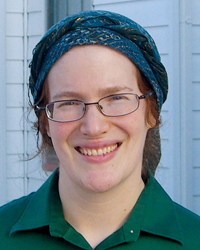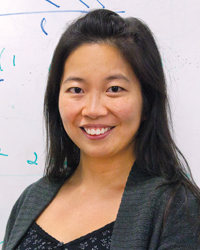Press Release: Carnegie Mellon Astrophysicists To Participate in European Space Agency's Dark Energy Mission
McWilliams Center Researchers Shirley Ho and Rachel Mandelbaum Named to US Science Team Working With Space-based Telescope
Contact: Jocelyn Duffy / 412-268-9982 / jhduffy@andrew.cmu.edu

 PITTSBURGH—NASA has named Carnegie Mellon University astrophysicists Shirley Ho and Rachel Mandelbaum to a 40-member U.S. science team that will participate in the European Space Agency's (ESA's) Euclid mission. A space-based telescope, Euclid will be used to investigate the greatest mysteries of the universe — dark matter and dark energy.
PITTSBURGH—NASA has named Carnegie Mellon University astrophysicists Shirley Ho and Rachel Mandelbaum to a 40-member U.S. science team that will participate in the European Space Agency's (ESA's) Euclid mission. A space-based telescope, Euclid will be used to investigate the greatest mysteries of the universe — dark matter and dark energy.
NASA will support the researchers from 2013 to 2028 as they prepare for and carry out collaborative scientific research using the data gathered by Euclid, which is planned for launch in 2020.
Ordinary visible matter, like stars and galaxies, make up about 4 percent of the universe; the remaining 96 percent is made of dark matter and dark energy that can't be seen directly. Even though scientists can't see it, they can learn more about dark matter and dark energy by studying how it impacts what can be seen. Euclid's telescope and instruments will gather information from approximately two billion galaxies contained in one-third of the sky. Researchers will use the data to measure weak gravitational lensing, baryon acoustic oscillations and redshift space distortions, which will allow them to analyze the effects of dark matter and dark energy.
Mandelbaum, an assistant professor of physics and member of CMU's Bruce and Astrid McWilliams Center for Cosmology, studies weak gravitational lensing. As light from distant galaxies travels toward earth, it passes by other galaxies. The ordinary and dark matter contained in the galaxies create a gravitational field that causes the light rays to bend, distorting the images seen by telescopes, like Euclid. Mandelbaum and other researchers who study weak lensing measure and average the slight distortions seen over many galaxies. From these averages, they can derive how much dark matter lies in and between galaxies and how it is distributed throughout space. They also can study how these distortions change over time, which can reveal valuable information about dark energy.
"With lensing we can learn about the large scale distribution of all of the matter of the universe - even the dark matter we can't see. If we truly want to understand the structure and evolution of the universe, we need a tool like lensing that reveals the presence of all of the matter," Mandelbaum said.
Ho, an assistant professor of physics and member of CMU's McWilliams Center, specializes in studying baryon acoustic oscillations (BAOs) and redshift space distortions. BAOs are relics of sound waves from the early universe. These remnants can be measured and used as a standard cosmological ruler to calculate how the universe has expanded over time. With an understanding of this expansion, researchers can learn about the mysterious dark energy that dominates 70 percent of the universe and drives the accelerating rate of expansion and the dark matter that makes up nearly 25 percent of the universe. Ho, in collaboration with her European colleagues, also will use Euclid to measure the velocity of galaxies and study redshift space distortions, which can be used to measure dark matter, the growth of the universe and test Einstein's theory of relativity.
"By using spectra for approximately 70 million galaxies that will be provided by Euclid, we can explore the universe using a variety of dark energy probes, such as BAOs, weak lensing and redshift space distortions," Ho said. "Euclid scientists can combine what is learned from these probes to test our understanding of what the universe is made of and how the universe works."
Euclid is a European Space Agency mission with science instruments and data analysis provided by the Euclid Consortium (http://www.euclid-ec.org) with important participation from NASA. NASA's Euclid Project Office is based at NASA's Jet Propulsion Laboratory (JPL) in Pasadena, Calif. The JPL will contribute the infrared flight detectors for one of Euclid's two science instruments. NASA's Goddard Space Flight Center in Greenbelt, Md., will assist with infrared detector characterization and will perform detailed testing on flight detectors prior to delivery. Three U.S. science teams, led by JPL, Goddard and the Infrared Processing and Analysis Center at Caltech, will contribute to science planning and data analysis. Ho and Mandelbaum are members of the JPL team. Caltech manages JPL for NASA.
###
Pictured above are CMU astrophysicists Shirley Ho (left) and Rachel Mandelbaum.